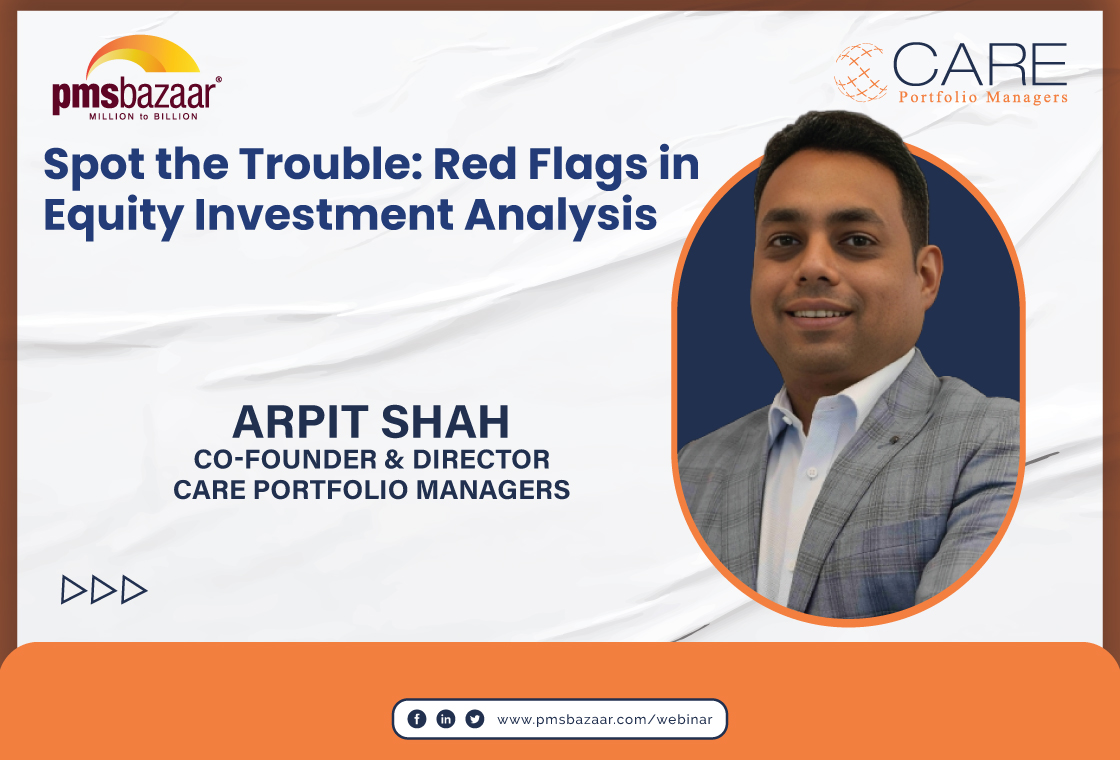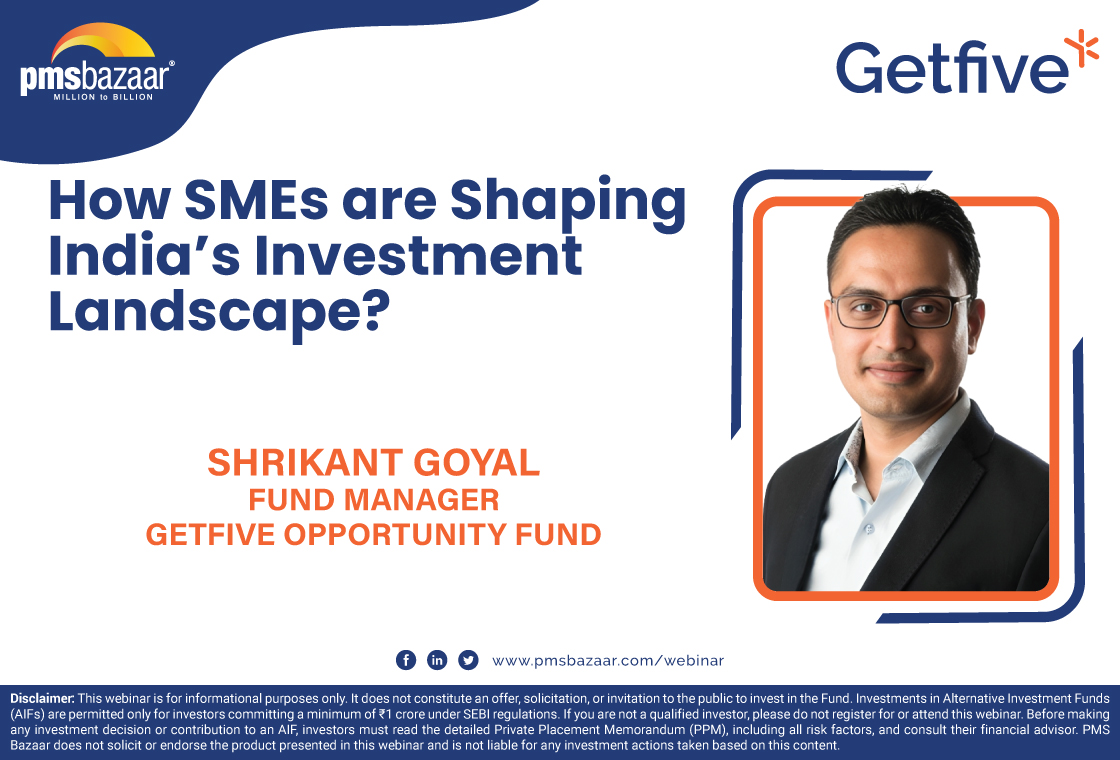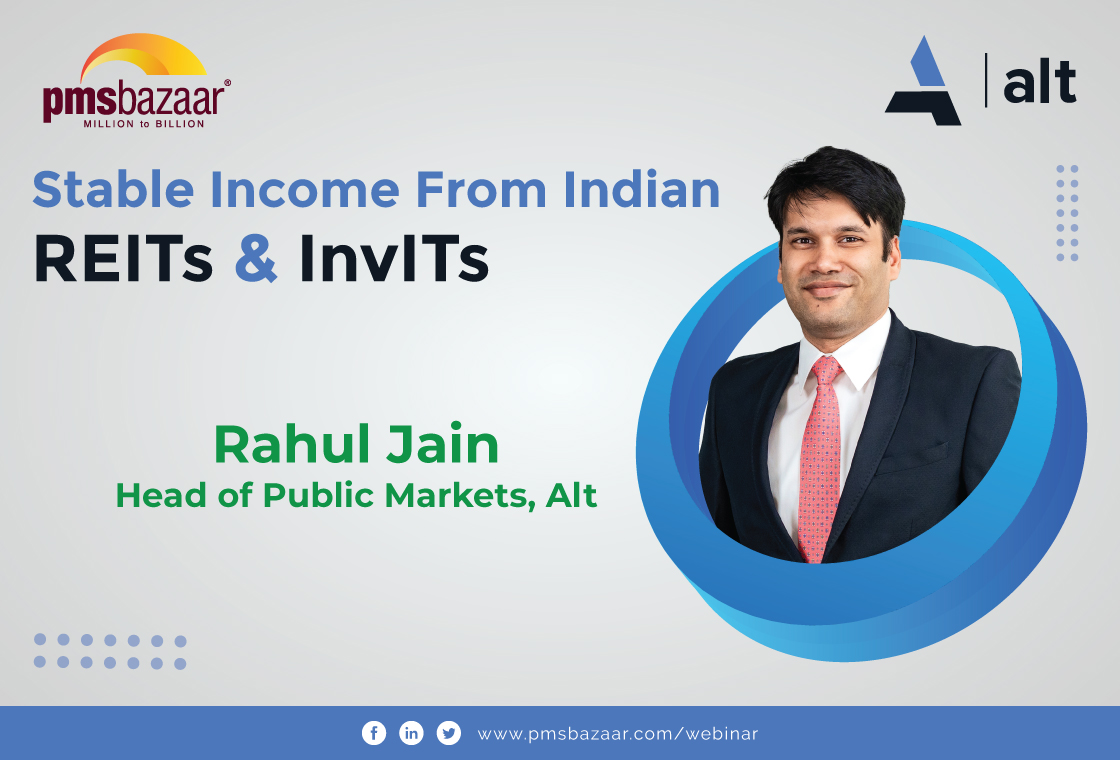If data is the new oil, data science is all about putting that fuel to drive returns in the investing field. Active fund management a couple of decades back was about the right connections and right network. Things have changed ever since. With corporate data, especially concerning listed companies, becoming widely available, access is no longer a problem. The toughest part of the investing game today is to be able to analyse data and come to decisions reasonably fast, as information asymmetry becomes scant. Thus, decoding the risk-return spectrum requires fresh perspectives.

To educate subscribers and investors on this topic, PMS Bazaar along with Avendus Capital is holding a series of special webinars on 'How data science can help generate alphas and manage risks'. Sharing his wisdom and experience is none other than Avendus Capital Public Markets Alternate Strategies's Rishi Kohli who is MD and CIO – Quant Strategies. Here are the main takeaways from the very first episode of the series.
About the speaker
Rishi has two decades of rich experience in the Indian capital markets. Prior to joining Avendus, Rishi was the CEO and CIO of ProAlpha Capital, the India arm of Monsoon Capital, for more than 13 years where he was responsible for the overall management of the firm’s public equities investment strategies.
Rishi started his career as a derivative researcher at ICICI Securities, before joining SSKI Securities where he set up and headed the institutional equity derivatives desk. Among his many professional achievements, Rishi is credited with starting one of the first quantitative hedge fund businesses in India in the quant trading space back in 2007.
Avendus Capital Public Markets Alternate Strategies is part of the Avendus Group, and manages an AUM of approx. $800 million under long short strategies. It is one of the largest hedge fund managers in India.
Shift towards passive investing
Active investing is a hands-on approach whose goal is to beat the stock market index. On the other hand, passive investing is about researching, buying stocks/securities. The goal of active investing is to beat the market index whereas the goal of passive investing is to get market returns.
Over the years, we have seen a definite shift towards passive investing. Rishi took the example of the U.S. where passive investing has made giant strides. In Dec-1998, passive funds in the U.S. formed just 11 per cent of the pie. As of April 2019, the split between active and passive funds is 50:50. "This is a result of a lot of active strategies not performing well over time, and a lot more sophisticated smart passive strategies coming on. In India, we are currently where the U.S. market was in the end of 1990s or early 2000s. We are starting to hear about passive funds. The shift towards passive funds, ETFs etc. is expected to happen in India as well," Rishi said.
Understanding quant strategies
Passive investing falls under data driven investment strategies. While the word 'quant' is used interchangeably with 'data science', it is important to understand that the moment one is talking about passives they should realize that they are rule-driven methodologies. There is no longer a fund manager who arbitrarily takes calls. Passive investing is about rules alone.
"In a rule-driven investment approach, if there is no other discretionary decision taken. then it falls under data-driven/quant space. The AUM of quant based MFs in the U.S. has grown at 19.2% CAGR from 2010-2017 and is expected to grow at similar space going forward. In India, AUM across all quant MFs is miniscule, so there is a long way to go. Many are sensing the opportunity and have initial few funds," noted Rishi.
The 'cricket' connection
Using the analogy of cricket, the Avendus expert talked about principles that are similar between the sport and quant investing.
Discipline: Like rules in cricket, quant investing is all about rules based approach and systematic process
Balance: Getting the right player mix is an art in cricket. In quant investing, diversification balance is achieved through techniques, time duration and strategy types.
Going on the offensive: In the ODI and T20 versions of cricket, powerplay happens when fielding restrictions allow batsmen more freedom to score runs. In quant investing, power plays are used to maximize returns.
Singles and twos: When batsmen are stuck, in off-form or facing a formidable bowling attack, they take singles and twos to keep things rolling. In quant investing, the law of large numbers works with reality closer to expectations.
Game plan: Playing good cricket needs a game plan. In quant investing, managing risk and enhancing risk-adjusted returns is the blueprint to success.
Be wary of cognitive biases
While investing is about data and numbers, it is equally important for investors to know what prevents them from using those numbers optimally. One of the main challenges is cognitive bias, which is a systematic pattern of deviation from norm or rationality in judgment. Individuals create their own "subjective reality" from their perception of the input. An individual's construction of reality, not the objective input, may dictate their behavior in the world and this can lead to poor investing results.
Rishi talked about 6 cognitive biases.
Recency bias: This bias favours recent events over historic ones. Recency bias gives "greater importance to the most recent event", such as a stock that has recently done well finds place in portfolios even though it may not be a good time to buy it.
Confirmation bias: This is the tendency to search for, interpret, favour, and recall information in a way that confirms or supports one's prior beliefs or values. If an investor makes up their mind on a strategy, stock/security, then they tend to only give preference to information that confirms the above.
Herding bias: This behavior of individuals in a group acting collectively without centralized direction. Herd behavior occurs in animals in herds, packs, bird flocks, fish schools and so on, as well as in humans. Often when a stock, business or fund manager does well, the crowd follows. There is no safety in large numbers, unless backed by quality.
Survivorship bias: This is the logical error of concentrating on the people or things that made it past some selection process and overlooking those that did not, typically because of their lack of visibility. This can lead to some false conclusions in different ways. Just because a business has thrived for the last 10 years, does not give it a better chance to do an encore in the future.
Gambler's fallacy: Also known as the Monte Carlo fallacy or the fallacy of the maturity of chances, is the incorrect belief that, if a particular event occurs more frequently than normal during the past, it is less likely to happen in the future (or vice versa). Investors often commit gambler's fallacy when they believe that a stock will lose or gain value after a series of trading sessions with the exact opposite movement.
Anchoring effect: This causes an individual's decisions to be influenced by a particular reference point or 'anchor'. Once the value of the anchor is set, subsequent arguments, estimates, etc. made by an individual may change from what they would have otherwise been without the anchor. For instance, anchoring can lead to an irrational bias towards an arbitrary benchmark figure. This benchmark then skews decision-making regarding a security by market participants, such as when to sell the investment.
Quant strategy types
Rishi discussed some of the main quant strategy types.
Long funds - Use factor (value etc.) based investing, smart beta (different weighting methods with same stocks as in a mcap-based index etc.) and quantamental (mix of quant and fundamentals) approaches. Global AUM in long-only quant strategies is $1480 billion.
Market neutral funds - Deploy statistical arbitrage, volatility arbitrage, equity market neutral methods etc. In a market-neutral fund, the investment manager seeks to deliver profit for investors regardless of an upward or downward market environment, typically through the use of paired long and short positions or derivatives. Net exposure is close to zero. The advantages of these funds is lower correlation to broader markets, low net exposure leading to low risk and stable returns a majority of the time. Drawbacks are high cost due to active churn, and lower returns in rising markets.
Giving a detailed explanation of managed futures strategy, Rishi said this approach is directional and typically momentum based. Here, there are mainly trades in futures across asset-classes using trends following models. Funds can be targeting short term or long term trends. "Managed futures provide portfolio diversification by offering exposure to asset classes to help mitigate portfolio risk in a way that is not possible in direct equity investments," clarified Rishi.
Long-short funds - In this strategy, the fund holds investments long and in addition it sells securities it does not own (short). The goal of a long-short fund is to find investments anticipated to go up, and find investments anticipated to go down, and invest in both in an attempt to increase returns. These are not zero net exposure funds; they can go from net-long to net-short etc. "Intra-sector dispersion can be an opportunity for market-neutral and long-short funds," says Rishi. Long-short funds use managed futures, equity long-short and global macro strategies. The advantages of long-short funds are low correlation to many strategies, attractive risk-adjusted returns and low risk if low net exposures are maintained. Cons include long-biased exposures and can have large drawdowns in periods of market stress.
Issues with quant investing and solution
Next, the expert from Avendus talked about the challenges that face quant investing and how to solve them.
In challenges, quant investing faces issues such as garbage in garbage out (GIGO), survivorship & confirmation bias, model update frequency, adjusting returns for trading costs and slippages, and lack of access to global experience.
Solutions to the above can be in the form of intensive data cleaning, right process for backtesting/simulation, correct use of statistics and proper processes, and a lot of attention paid to model updation at the optimum frequency.
At the end of the webinar, Rishi spent about 20 minutes in an exhaustive questions and answer session with PMS Bazaar subscribers.
If this article has whetted your appetite for more, relive the entire session by clicking on the link below:
For more information, please contact info@pmsbazaar.com
Recent Blogs
.jpg)
Passively Active Investing — A Modern Investor’s Lens on ETF-Based PMS
PMS Bazaar recently organized a webinar titled “Passively Active Investing — A Modern Investor’s Lens on ETF-Based PMS,” which featured Mr. Karan Bhatia, Co-Founder and Co-Fund Manager , Pricebridge Honeycomb ETF PMs. This blog covers the important points shared in this insightful webinar.

Spot the Trouble: Red Flags in Equity Investment Analysis
PMS Bazaar recently organized a webinar titled “Spot the Trouble: Red Flags in Equity Investment Analysis,” which featured Mr. Arpit Shah, Co-Founder & Director, Care Portfolio Managers. This blog covers the important points shared in this insightful webinar.

Long-Only AIFs Rebound Sharply in October; Long-Short Strategies Lag Despite Lower Volatility
106 long-only AIFs averaged 3.68% vs 32 long-short AIFs at 2.7%; only 24–31% of funds beat key indices

Markets log strongest monthly gains in 7 months; PMS performance turns near-uniform in October
Nifty 50 TRI gained 4.62%, BSE 500 TRI rose 4.27%; 415 of 427 equity PMSes ended positive

How SMEs are Shaping India’s Investment Landscape?
PMS Bazaar recently organized a webinar titled “How SMEs are Shaping India’s Investment Landscape?” which featured Mr. Shrikant Goyal, Fund Manager, GetFive Opportunity Fund.

Stable Income from Indian REITs and InvITs
PMS Bazaar recently organized a webinar titled “Stable Income from Indian REITs and InvITs,” which featured Mr. Rahul Jain, Head of Public Markets, Alt.

5 Key Considerations Before Investing in AIFs in India
Alternative Investment Funds (AIFs) have emerged as a compelling option for sophisticated investors seeking diversification and potentially superior returns. But venturing into AIFs requires a clear understanding of their unique characteristics that go beyond simply knowing what they are and their categories.

How AIF can help in diversification?
Traditionally, Indian investors have relied on a mix of stocks and bonds to build their wealth. While this approach offers diversification, it can still leave your portfolio vulnerable to market fluctuations. Enter Alternative Investment Funds (AIFs), a dynamic asset class gaining traction for its ability to unlock diversification beyond the realm of conventional options.

